Manufacturers enjoy the advantages of continuously innovative products that promise to make their companies more productive, not to mention profitable. One of the more recent concepts in the increasingly digital world is the Internet of Things (IoT), which increasingly informs big industrial design. This sounds like a crazy name, and it probably sounds foreign to the average person. However, here is the quick definition.
According to Forbes Magazine contributor Jacob Morgan, the IoT can be defined as “connecting any device with an on and off switch to the internet (and/or to each other).”
Morgan adds that the list of products with this potential is almost limitless. It includes cell phones, headphones, jet engines, washing machines, and oil rigs, to name just a few.
The Impact of IoT on Big Industrial Design
It comes down to this principle, according to Morgan: “Anything that can be connected will be connected.”
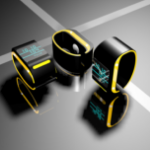 An example of applications that could benefit you in the real 21st-century world includes building access to your calendar into your vehicle. So, if you are headed to a meeting, you could receive information about the best route to take. Along with that benefit, what happens if you hit heavy traffic on your way to this meeting? Your car’s interconnection to your calendar could result in it shooting off a text message to those with whom you are expected to meet informing them that you will be delayed.
An example of applications that could benefit you in the real 21st-century world includes building access to your calendar into your vehicle. So, if you are headed to a meeting, you could receive information about the best route to take. Along with that benefit, what happens if you hit heavy traffic on your way to this meeting? Your car’s interconnection to your calendar could result in it shooting off a text message to those with whom you are expected to meet informing them that you will be delayed.
This kind of interconnectedness has two advantages – you don’t tick off the people with whom you expect to be meeting and you don’t endanger yourself while driving by talking on your phone or texting yourself.
Clearly, such products have the capacity to increase company profits as well as provide big benefits for consumers. As big industrial design looks at trends in 2018, and new products moving into 2019, which is nearly upon us, there are some new products already on the market or venturing into the market that can enhance companies’ bottom lines and improve consumer lifestyles at the same time.
Burgeoning Uses of Augmented Reality
First of all, what is Augmented Reality? Another Forbes Magazine article by Bernard Marr describes AR as “[using] the existing environment and [adding] information to it to make a new artificial environment.”
So what does that mean to the “Average Joe?”
Here is an example in which many people, especially football fans, can relate.
Marr says, “If you’ve watched an American Football game since 1998 you likely have seen the down line portrayed as a yellow line that moved down the field. That is an example of an augmented reality application.” So apparently, AR has been around for many years and most of us have not realized it.
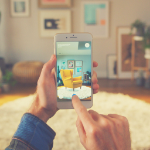 An example of current applications of AR is the IKEA Place app. You may have bought a piece of furniture in the past that looked “just right” in the store. However, when your much-anticipated furniture arrived, you realized that it did not work well at all with your home decor. With the IKEA Place app, you never have to worry about that happening again. The app provides you with the capability of scanning the room for which you are buying furniture. Then it places IKEA objects in the spaces you are considering for new pieces, That way you can determine whether a piece of furniture, wall hanging, or other decors really works in the space you are planning for it. You save time and money by not wasting either with purchases that will not work in the end.
An example of current applications of AR is the IKEA Place app. You may have bought a piece of furniture in the past that looked “just right” in the store. However, when your much-anticipated furniture arrived, you realized that it did not work well at all with your home decor. With the IKEA Place app, you never have to worry about that happening again. The app provides you with the capability of scanning the room for which you are buying furniture. Then it places IKEA objects in the spaces you are considering for new pieces, That way you can determine whether a piece of furniture, wall hanging, or other decors really works in the space you are planning for it. You save time and money by not wasting either with purchases that will not work in the end.
Manufacturers Can Get a Boost from this AR Tool
As the economy grows increasingly global, It is not always easy to get the people involved in new product development to participate in a design review at a convenient time for everyone. Not only that, the project stakeholders must be able to ensure that they can make all the product information available to everyone involved and record feedback for follow-up and course corrections.
This is where AR capability becomes very handy.
In this case, AR becomes an important tool enabling design team members to conduct their own design review from anywhere in the world. They can visualize, interact with, and report their findings on product quality from their current locations. The image team members see is 3D, and they can walk around it and look at different versions of the model. In fact, the AR image gives them the ability to take a little “trip” inside the 3D model to thoroughly inspect the design for possible flaws.
This completely transparent product design view proves to be essential for aiding clear communication between colleagues. Such capabilities can only improve industry efficiency.
So … what everyday products could be using AR in 2019?
The iPhone – According to the Digital Trends website, there is a rumor that new camera features on the 2019 iPhone models suggest AR capability could be a new feature. These camera features may include two stereo-vision lenses and a telephoto lens. They may, in turn, enable the imaging to comprehend 3-D space the way iPhone X’s True Depth camera does.
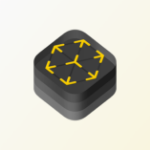 Apple also continues to develop its ARKit. In fact, Apple introduced ARKit 2.0 when it presented the iOS 12 system at a recent Worldwide Developer Conference. As part of that presentation, Apple introduced a “Memoji” feature that uses AR to create a character resembling the iPhone’s owner. It offers choices in hairstyle, eye color, and even features such as freckles. So, Apple maintains a firm place on the frontier of advancing big industrial design.
Apple also continues to develop its ARKit. In fact, Apple introduced ARKit 2.0 when it presented the iOS 12 system at a recent Worldwide Developer Conference. As part of that presentation, Apple introduced a “Memoji” feature that uses AR to create a character resembling the iPhone’s owner. It offers choices in hairstyle, eye color, and even features such as freckles. So, Apple maintains a firm place on the frontier of advancing big industrial design.
Digitalization
According to the Gartner IT Glossary, digitalization is defined as:
“The use of Digital technologies to change a business model and provide new revenue and value-producing opportunities; it is the process of moving to a digital business.”
As we discuss digitalization of product information, it may be useful to clarify the difference from a similar term that is often conflated with the term “digitalization.” This clarification may clear up some confusion in terms and ensure that people who use these terms are on the same page.
Do not confuse the term “digitization” with “digitalization.” According to the website i-Scoop, people commonly confuse these terms.
The i-Scoop article defines digitization in this way: “The transformation of analog to digital or digital representation of a physical item with the goal to digitize and automate processes or workflows.”
The practical application of this definition is automating formerly manual and paper-based processes by digitizing information. This trend has generally been complete in most businesses these days.
The definition of digitalization that has already been offered covers its basic meaning fairly well. It is interesting to note that digitalization requires that digitization has already taken place. The core element in digitalization is data.
The I-Scoop article makes the following observation:
“Digitalization is about systems of engagement and systems of insight, leveraging digitized data and processes.”
All of that may seem very overwhelming, but what does digitalization mean for businesses in practical terms?
The PTC website breaks it down to the bottom line for businesses – data. This holds the key to any business’s or product’s position in the market. Product data cannot just be relegated to the manufacturing and engineering segments of a company. Businesses must employ it throughout their departments because it holds the key to the way the marketing department promotes products and how the salespeople sell them.
All company players should have easy access to product data electronically to effectively perform their functions, whether they are in the development department or in marketing. This is especially true if a company has recently gone through a merger because it offers easy access to product information. This, in turn, avoids any data gaps between the two companies that have just become one.
One of the most important reasons for company digitalization, above producing new revenue and keeping communication lines open, is keeping abreast of and successfully meeting industry standards. This holds especially true for industries such as medical devices and vehicles, which are subject to tight government regulation.
The digitalization of product data assists companies in recording and pinpointing root causes for product issues as well as tracking changes during any product’s lifecycle.
Big Industrial Design with People in Mind
Product design trends do not just enhance the productivity and profitability of the industry, they affect the everyday lives of people. When you come right down to it, people are the reason any business creates anything. Businesses want people to buy their products and use them. Some of those products are geared toward those engaged in particular industries. An example of that would be technology geared toward space exploration or the healthcare industry. Other products are geared toward general consumer consumption.
The political sphere cannot be overlooked.
According to an article compiled with perspectives from many big industrial design players on the Fast Company website, one genre of product design will aid grassroots political activists, Regardless of the ideology any political activist espouses, some future information technology products have the potential to further their stated goals. Websites providing individuals and organizations with the needed resources to inform their actions are currently quite ubiquitous.
However, this article envisions moving website resources a step further by providing digital tools with the capability of informing people with the passionate desire to get involved about issues and activities, elections, and open electoral offices to run for in their communities.
Inclusiveness Enhances the Human Experience for Everyone
The Fast Company article also observes that cities, services, and products are often designed as if everyone has the same needs and abilities. Justine Lee with Frog says, “Going forward, it won’t be enough to design for some people, or even for most. The real challenge will be to design for all.”
Apparently, companies such as Apple, Microsoft, and Facebook, among others, have committed to making their products or services more accessible to people of varying abilities such as those with cerebral palsy or other disabilities. It’s not enough to design wheelchair-friendly sidewalks and building entrances. Clearly, there are still inclusivity frontiers to be discovered that will improve the human experience for everyone.
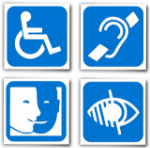 Assistive Technology helps the disabled to perform tasks that they would be otherwise unable to accomplish on their own. Such technology enables the disabled to enjoy more independence. One such product is called the UpWalker, which currently buys heavy advertising time on many TV channels. This walker not only gives those with mobility issues a safe way to stand on their own two feet, but do it comfortably, with good posture. This can help users to avoid backaches from walker use.
Assistive Technology helps the disabled to perform tasks that they would be otherwise unable to accomplish on their own. Such technology enables the disabled to enjoy more independence. One such product is called the UpWalker, which currently buys heavy advertising time on many TV channels. This walker not only gives those with mobility issues a safe way to stand on their own two feet, but do it comfortably, with good posture. This can help users to avoid backaches from walker use.
Ideas abound to make sure that life can be great for all.
What Would a Product Design Discussion Be without Discussing Artificial Intelligence?
The AI industry is taking off like a rocket and has the potential to affect all areas of life on earth and beyond.
The Fast Company article asserts, “Humans are on the cusp of the single largest revolution in technology, or call it the next industrial revolution.”
In fact, this article states that big industrial design, and even general product design, is headed for being the product of AID (Artificial Intelligence Design).
Branko Lukic, the founder of Nonobject, states the following in the article:
“Artificial Intelligence Design stands to become the most exciting design practice in the history of humankind. This practice does not exist yet, nor is there a school for it. But luckily industrial designers, being non-linear thinkers, and being able to cross platforms in true depth from sociology, ethnology, material science, ecology, biology, physics, mechanical engineering, electronic engineering, software development, and so on – they are our best bet, and are the best-equipped people on the planet to tackle this complex task of making AI that is safe and good for humans.”
There is one product expected to debut in 2019 that clearly uses AI. A 2018 brief by The Verge reports that a robotic butler, which it calls a “walker,” is most likely entering into service beginning sometime in 2019. The robot pictured with the brief does not yet have arms, but apparently, its creator Ubtech is working on that one.
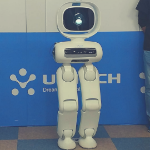
“It’s being touted as a more affordable complete home butler,” The Verge writes.
Indeed, the advantages of having this robotic lackey would include no worries about feeding it (although it might require a little oiling now and then) or hurting its feelings, not to mention providing occasional pay raises. The future owners of this non-human household servant can enjoy the benefits of scheduling assistance and home security patrol, among other burdensome household responsibilities performed by the walker.
Other Ramifications of AI
Our Apple Watches or cell phones may provide us with on-the-spot information that will even assist us in deciding our agenda for the day, or at least the next few hours. For example, we may someday be able to learn how long the lines are at our favorite grocery store.
Such information availability will also provide us with personal data at the tip of our fingers – for example, our basic health care data, credit card records, not to mention tracking our health habits on our Fitbits.
Fitbits use data to help us achieve healthier lifestyles. This data reminds us to get optimal physical activity daily, consume a healthy diet and get proper sleep. It is roughly the size of a clothespin, and it easily clips inside of a pants pocket or bra strap.
As the wearer goes throughout their day, it logs information such as the number of steps the wearer takes, distance traversed and the number of calories burned. Not only that, it monitors sleep quality, assuming the wearer takes it to bed with them.
However, all this AI-type data running around with us has the potential drawback of harming our privacy.
According to an article in Computerworld, smart watches and devices such as the Fitbit already have the ability to track us in many ways that might seem rather intolerable if we give such ramifications much thought.
While many parents of teenagers may find mobile devices that keep track of their children useful for keeping them out of trouble, there is a downside. That downside is the privacy issue. Although it’s super-convenient to have all kinds of information at our fingertips, are we sacrificing our personal privacy?
Apparently, companies are finding ways to collect and use personal data that includes the areas of personal health, location, and buying habits. Experts are expressing the concern that these device users may have their health and fitness data, along with other personal information, collected and eventually used against them.
This kind of information, if it is collected and transmitted, could result in personal issues such as the denial of a job promotion or insurance claim.
The Computerworld article author Matt Hamblen points out, “The question isn’t whether the personal information is being collected – it already is, increasingly – but how the parties collecting the information use the data.”
Apparently, most people have come to expect that their personal data will be shared, but they expect that it will be shared anonymously, and sadly, that is not necessarily the case. People are misguidedly expecting companies to attempt making the information anonymous, aggregating, and then selling it. They are not expecting their Personal Identifiable Information to be shared and sold. However, the technology to reliably anonymize data does not yet exist.
Other ramifications could include court cases in which subpoenas could be issued for smartwatch information demonstrating that a defendant in a case had not slept well the night before being involved in an accident.
Some say that if people have to worry the use of information recorded on their smart devices could come back to bite them, the government should place some regulation on the permissible use of personal data, because companies are not likely to self-regulate.
Another solution, outside of government regulation, is for consumers to demand that the companies from which they purchase these data-collecting products issue clear policies about the ways their data will be collected and how it will be used. This is the minimum standard that consumers have the right to expect.
The Intrinsic Tension between Societal Values and Monetary Value
Re-defining the basic consumer term “value” as it relates to company brands is another trend that may continue to evolve the way many “terms” do in our fast-paced society. The term “value” has at least a couple of meanings.
We may think about the value people place on a consumer product such as the iPhone, and its various evolutions. Some people are positive they cannot live without their iPhone and have the urge to trade their current one in with the release of every new upgrade (like the anticipated ones mentioned earlier). Others couldn’t care less about the many evolutions of the iPhone and stubbornly stick with their plain old flip phones. Still, others are stalwart Samsung smartphone users.
The Fast Company article also discussed the term “value” in light of monetary value versus the conscience – the basic principles for which humans stand up and defend – patriotism, religion, environmental awareness, etc. Those two definitions of “value” often war against each other.
Conclusion
The Fast Company article states, “Designers will begin to awaken to the social and political implications of their work. This will involve a lot of self-reflection and hopefully no shortage of concrete action.”
Although product design can clearly improve life on planet earth, designers must be aware of the negative side effects of products and build such considerations into the way they modify their products and make them available to the public.
Some of those negative ramifications include devices that disconnect people with the real world around them, AI that encodes socio-economic stereotypes, technologies that exaggerate economic advantages over others, personal data collection that harms individuals, and social networks that spawn lies and encourage hate.
However, while consumer product designers may well bear some responsibility for the negative ramifications of growing technological advances in big industrial design, individuals must learn self-discipline and consumer awareness as well. Social networks do not need to spread hate, and individuals can take an active role in ensuring that their private and identifiable information is kept private by acting as informed customers.
Cad Crowd Had Industrial Design Freelancers
If you are looking for industrial design services or product design services, Cad Crowd can help. We have a vast database of pre-vetted freelance designers who can bring your project idea to life and do so confidentially. Learn how it works.
If you haven’t yet set on a design, you can launch a design contest and receive numerous design concepts that you can choose from.

Nice Article.
I can´t wait to see what products come in the next 10 or 20 years with all this emergent trends and upcoming technologies in the field of design.